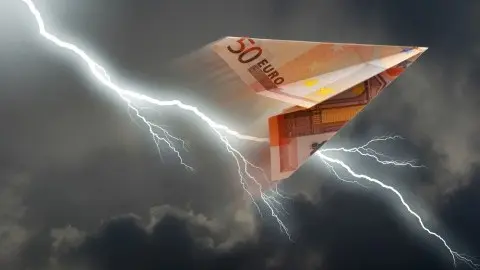FX: Dollar close to its peak
Peak dollar rhetoric dominates the FX environment as we look to the final stage of the dollar rally. The effect of fiscal stimulus on US growth is fading and the Fed isn't far away from the end of its tightening cycle, supporting our expectations that the dollar is to undergo a long-term bearish trend when the peak has past
As per our 2019 FX Outlook: Peak Dollar, we still expect the dollar to peak and look for the very last leg of the dollar upside. Although global trade war concerns and a sharp fall in equity markets are likely to lower the overall scale of the Fed tightening this year (our economists have downgraded the Fed outlook for 2019 from three hikes to two), given the current ultra-dovish market pricing (the market is pencilling in a partial rate cut this year) even more modest tightening vs what we previously expected should be enough to provide some support to the US dollar during the first half of the year.
The Fed will continue tightening and the widening interest rate differential between the US and G10 low yielders will push USD higher
The trade-weighted dollar should still do well as either (a) the global environment deteriorates further (not our base case) and USD will retain support in trade-weighted terms via its safe- haven characteristic (a trend observed over the past two months when the trade-weighed USD remained flat despite the aggressive dovish re-pricing of the Fed outlook); or (b) the global environment and risk assets stabilise, the Fed will continue tightening and the widening interest rate differential between the US and G10 low yielders will push USD higher.
But this should be the last leg of the dollar upside and the currency should embark on a gradual long-term bearish trend from 2H 2019 onwards as the Fed will be close to its terminal rate and the likely growing market concerns about the US twin deficit should push the dollar lower. While we acknowledge that the dollar decoupled from the widening twin deficit last year, this was in our view due to the unique mix of tight US monetary policy and loose fiscal policy. This is unlikely to be repeated this year as the Fed is not far away from the end of its tightening cycle while the effect of the fiscal stimulus on US growth is fading.
This means EUR/USD will move higher in the latter part of the year (we forecast 1.20 by the year-end) though this should be largely about a weak USD rather than a strong EUR. Unlike in 2017, we don’t believe the ECB will be a catalyst for a stronger euro this year. With the central bank expected to barely deliver one 20 basis point depo rate hike very late this year and no increase in the refi rate over the forecast horizon, the case for a domestically-induced EUR rally is rather low.
Despite the rising odds of the Article 50 extension, this does not necessary argue for a bullish GBP stance
Despite rising odds for an Article 50 extension, this does not necessarily argue for a bullish GBP stance as (1) by delaying Article 50 the uncertainty will still remain in place; (b) the reasons behind the delay may prompt further GBP weakness (such as early elections). And although some risk premium is already priced into GBP (around 1.5% into EUR/GBP based on our financial fair value model) the fairly large veil of uncertainty about the Brexit outcomes should keep such risk premium in place and could even cause it to rise further. We thus expect EUR/GBP to continue to trade around the 0.90 level and sterling to lag.
This publication has been prepared by ING solely for information purposes irrespective of a particular user's means, financial situation or investment objectives. The information does not constitute investment recommendation, and nor is it investment, legal or tax advice or an offer or solicitation to purchase or sell any financial instrument. Read more
Download
Download article
4 January 2019
January Economic Update: Overdoing the gloom This bundle contains 8 Articles